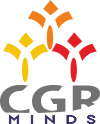
Yes, it is Possible, to Complete all your projects in 50% of estimated completion time within scope and budget…
In many scenarios investors suffer losses when projects are delayed or when there are compromises on the scope of a project. We help investors realize greater profits from their projects. We help organizations achieve quantum jump in business performance by rapidly developing and sustaining a significant competitive edge focusing on a few levers of a project system”. We work with clients only when we are confident that we can multiply their profits within 2-3 years, by completing any project in less than the estimated time frame, within budget and complete scope. We solve your project-completion problems with our 3-step approach. First is Tactical analysis-we will work with your company to plan our approach to meeting your goals. Second is 24 Hour Session-we sit down with you to discuss your goals and identify how we can create a competitive advantage for your company through project management optimization. And last is Roll-out & PMO-Finally, we will develop the capabilities to successfully implement our co-created plan, such as DBR and VMI to build reliability and a decisive competitive advantage for your company.
We stay engaged and remain a stakeholder through the course of the implementation period. The complete solution is agreed with clients, before starting the engagement.

Project management & approach
Our Team members are well recognized in the industry for their extensive experience and expertise in training and implementing TOC across all industries. We are systematically performing, deploying and training large organizations across the globe and specifically, in the last 7 years the infrastructure, thermal & solar power plants, infrastructure, real estate, maintenance, petroleum (Oil & Gas) etc.

- We have achieved outstanding results in implementing TOC and CCPM in many companies and government organizations across numerous markets mainly in North America, Europe & Scandinavian Countries, Eurasia and the Far East.
- We have trained thousands in TOC and CCPM Certification and even more in hybrid innovative scientific management tools to ensure optimal results.

Overview of the Theory Of Constraints (TOC) and Critical Chain applied to Project Management (CC & PM)
The Theory of Constraints, or TOC for short, is a set of concepts, principles and tools created by Dr. Elayhu Goldratt to manage systems better. TOC provides a set of holistic processes and rules, all based on a systems approach that exploits the inherent simplicity within complex systems through focusing on the few “leverage points” as a way to synchronize the parts to achieve ongoing improvement in the performance of the system as a whole. The end result is a construct of simple solutions to seemingly complex problems.

TOC Knowledge covers the following key areas for your management:
- Project Management – CCPM – Critical Chain Project Management (1997)
- Managing People – Management Tools (MT) (2002)
- Strategy & Tactics – Developing a company-wide improvement plan (2005)
- Distribution & Supply Chain Management – DTA – Distribute to Availability

| Proven TOC Success in Industries: – Defense – Government – Public Works – Software and IT projects – Education – Social Services – Manufacturing – Oil & Gas – Mining – Distribution – Financial Services – Health | The Results: – On-Time In-Full (OTIF) reliable delivery to customers – Better control over operations & far less firefighting – Higher Net Benefit, Upside 20-40% – Reduced Project Times and therefore less working capital – Additional capacity becomes exposed without any investment – Rapid response culture, no multi-tasking & fewer chronic conflicts between team members |
To accomplish this, TOC shifts the focus of management from optimizing separate assets, functions and resources to increasing the speed and inter connection of the entire system. TOC’s key processes are focused on removing the barriers that block each part from working together as an integrated whole.
Universally Applicable
Although initially developed in response to specific challenges in the manufacturing sector, TOC applications have been developed for a wide variety of industries using the TOC Thinking Processes. These are successfully implemented in sectors like Heavy Capital Equipment, Construction, Oil & Gas, Retail, Software & IT Projects, Banking, FMCG, Logistics, Job Shops, Mining, Healthcare, etc. TOC has been applied in Not-for-Profits and Government including Public Works and Transport, Education, Organized Religion, the Military, the judicial system and others with equally remarkable results.
Critical Chain Project Management (CCPM) is one of the many solutions in the TOC framework. CCPM involves managing time buffers and task priorities to systematically work through project plan that will define and exploit constraints. Using the five focusing steps which is also known as continuous-plan-do-check-act applied to strategically selected areas.
A Comparison of Traditional and Critical Chain Project Management Methods.
| Traditional Project Management | CGR-MINDS Approach using CCPM |
| 1. Schedules worst-case task durations. | Schedules average task durations. |
| 2. Protects individual tasks with safety time. | Protects overall project completion with buffers. |
| 3. Emphasizes task progress. | Emphasizes project progress. |
| 4. Starts gating tasks ASAP. | Starts gating tasks when they need to start. |
| 5. Starts and finishes tasks at scheduled start and finish times. | Starts tasks as soon as predecessors are done, finishes tasks as quickly as possible. |
| 6. Makes resource contention a PM “fact of life”. | Resolves resource contentions explicitly. |
| 7. Makes Multi-tasking a PM “fact of life” | Minimizes Multi-tasking by setting priorities |
| 8. Reacts to uncertainty by changing priorities, expediting and creating a new schedule. | Managing uncertainty by monitoring impact of events on buffer consumption. |
| 9. Makes task linkages and constraints reflect ad-hoc or habitual scheduling decisions. | Makes task linkages and constraints reflect only physical scheduling requirements. |
